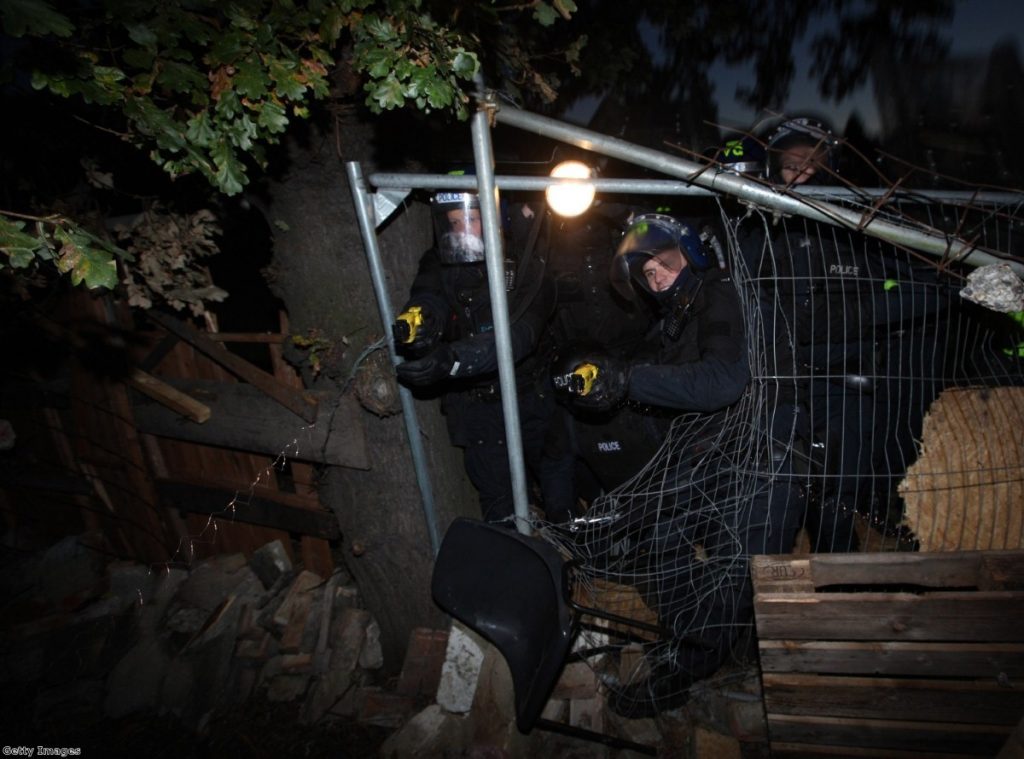Police say they need tasers to combat terror – but where’s the evidence?
Terrorism is the hook which everyone can hang their coat on. Whenever there is a terror attack, the usual suspects come out the woodwork to suggest it confirms whatever they already held to be true – be it multiculturalism, or Islamic fascism, or the need for a snoopers' charter.
So it came as no surprise when Police Federation boss Steve White popped up on the airwaves this weekend saying terrorism means all front-line police officers should get a Taser. He did not provide any evidence for how the electro-shock guns would help officers deal with specific terror threats. He did not need to. Terrorism, like paedophilia, is the ultimate bogey man. Merely mentioning its name is evidence enough.
Except the evidence shows that the last thing we need is a nationwide roll-out of Tasers. The electric shock guns are already spreading across UK police forces at an extraordinary rate. Police in England and Wales used them on over 10,000 occasions in 2013, a 27% increase on the previous year. In 2009, there were used on a little over 3,000 occasions.
Advocates for the weapon say it is a non-lethal alternative to firearms. There is nothing wrong with this argument. As even Amnesty International admits there is definitely a role for the weapon in policing. But as with all powers handed to the police, there are strong signs of mission creep.


The Independent Police Complaints Commission (IPCC), which supports the use of Tasers, has warned that police are using the weapon on people who are already in custody. It has "major concerns" about the use of the weapon in 'drive-stun' mode, where it is applied directly to the body rather than fired from a distance. When used this way it does not have an incapacitating effect and is instead a form of pain compliance. But in many of the cases investigated by the watchdog, it had the opposite effect and actually stimulated further resistance.

Tasers have gradually been adopted by more and more police forces
Tasers are potentially life-threatening. Last December, a man died after being shot with a Taser by police during an attempted robbery. There are plenty of similar cases, such as twenty-three year old Jordan Lee Begley, or petrol-soaked Andrew Pimlott, who was tasered while holding what appeared to be a lit match and caught fire. There have been at least ten deaths in England and Wales over the past decade.
Campaigners say Taser use against children has increased six-fold over four years. Devon and Cornwall police were criticised for using a Tasers against two boys aged 14 and 15 in a school.
In the US, where Taser use is far higher and the police are generally more trigger-happy than our own, more than 460 people have been killed by the weapons. In many cases, the coroner said the electro-shock weapon was a contributory factor.
We might have more confidence in the police's use of the weapon if they had bothered to properly record and analyse information about its use. But at the moment guidelines, training programmes and usage data are left up to each individual force and the results are predictably fuzzy. There is no standard form of recording Taser usage, so some forces have gone into detail about how the weapon was used, against whom and when – and many haven't.

American students demonstrate against Taser use in 2006
The IPCC found many forces took the police officer's description of the Taser incident at face value "without any further probing". Officers are not being asked to even provide their rationale for using the weapon, let alone having forces analyse the extent and type of use.
This failure of analysis partly explains the significant differences in how often the weapon is used by different forces. Staffordshire police, for the record, are the most enthusiastic, having discharged them on 72 occasions and drawn them "as a deterrent" 547 times over nine years.
Tasers certainly have a role in policing – there are few serious organisations who question that. But as with all police powers, there is a temptation for them to be used in an ever-growing number of situations. To have faith in the police's ability to use this weapon responsibly, we need clear data on usage, which includes not just whether it was fired but why and when. Until that bare minimum requirement of scrutiny is met, we should be sceptical of the sudden need for a full roll-out.
If the police think they need the weapon to combat terror, they must be able to prove it.









